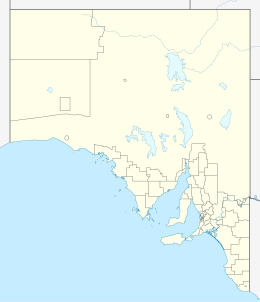Nuyts Archipelago
| Geography | |
|---|---|
| Location | Great Australian Bight |
| Administration | |
|
Australia
|
|
The Nuyts Archipelago is an island group located in South Australia in the Great Australian Bight to the south of the town of Ceduna on the west coast of the Eyre Peninsula. It consisting of mostly granitic islands and reefs that provide breeding sites for Australian sea lions and support colonies of short-tailed shearwater. It also includes the island group known as the Isles of St Francis. All the islands with exception of a part of Evans Island, are located with the following protected areas - the Nuyts Archipelago Wilderness Protection Area and the Nuyts Archipelago Conservation Park.
Of the roughly 30 islands and reefs in the archipelago, those lying furthest from the coast of the Eyre Peninsula are known as the Isles of St Francis, after the largest. Most of the islands are formed of calcarenite lying on granite; where the softer calcarenite is close to sea level it has been heavily eroded by wave action.
The area is biologically unique in South Australia due to the influence of the Leeuwin Current, flowing eastwards across the Great Australian Bight and bringing features more typical of western than south-eastern Australia. In and around the archipelago the subtropical Leeuwin Current meets and mixes with the colder waters of the Flinders Current creating a biodiversity hotspot. Examples of the effect of the Leeuwin Current include the presence of plate corals and fish such as the Western Footballer.
The archipelago was named in 1802 by Matthew Flinders after Dutch diplomat Pieter Nuyts, who was the senior official of the Dutch East India Company on the ship 't Gulden Zeepaert ("The Golden Seahorse"), captained by François Thijssen who mapped the southern coastline of Australia from Albany to Ceduna in the course of a 1626–27 voyage from the Netherlands to Formosa and Japan. Nuyts was in the region of the archipelago in January 1627. Both Flinders and Nicolas Baudin, who also explored the area in 1802, named several of the islands.
...
Wikipedia

